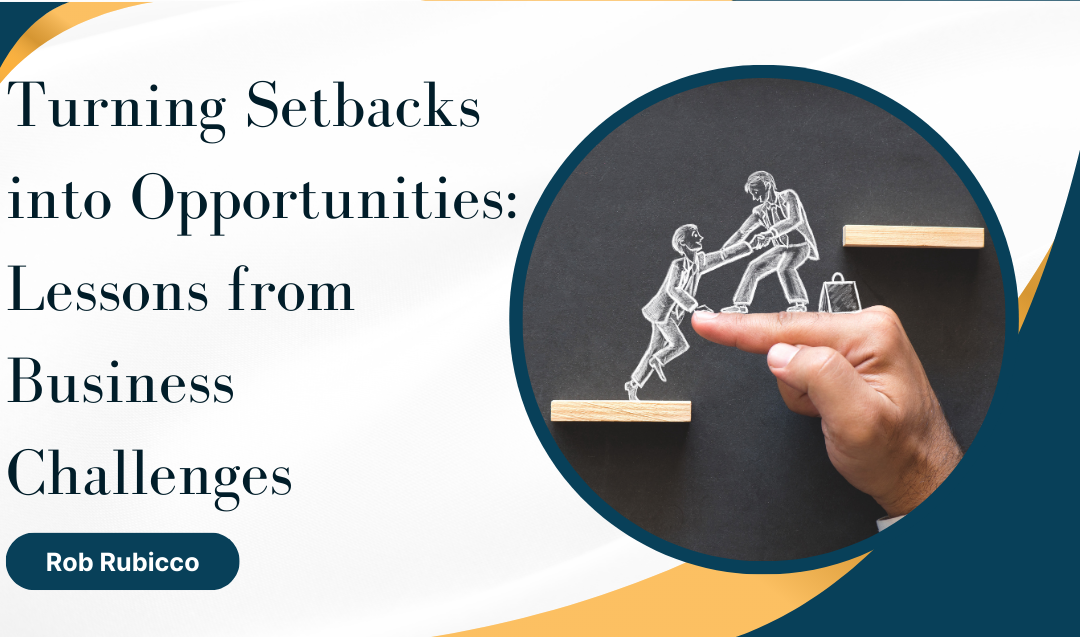Setbacks in business are inevitable. Whether it’s an economic downturn, a failed product launch, internal conflict, or shifting market demands, every entrepreneur and business leader will encounter challenges. What separates thriving businesses from those that falter is not the absence of obstacles but the ability to turn setbacks into opportunities for growth, innovation, and renewed purpose.
One of the most powerful lessons in business is understanding that setbacks are not endpoints—they’re pivotal moments. When handled with the right mindset, challenges can serve as springboards to better strategies, more resilient structures, and clearer visions.
Take, for instance, the early failures of companies like Airbnb or Starbucks. Airbnb struggled to get users and funding initially, facing rejection after rejection from investors who didn’t believe people would ever rent out rooms to strangers. But rather than folding, the founders adjusted their approach, doubled down on customer trust and user experience, and eventually transformed the travel and hospitality industry. Similarly, Starbucks once overexpanded and faced a decline in quality and customer satisfaction. Instead of ignoring the decline, they paused growth, retrained staff, and refocused on customer experience—ultimately emerging stronger.
Setbacks can highlight weaknesses or inefficiencies that might otherwise go unnoticed. A sudden loss of a major client may force a company to evaluate its dependency on one revenue stream and diversify its offerings. A PR crisis may reveal gaps in internal communication or brand alignment that need immediate attention. These moments of discomfort often trigger critical introspection, which, when acted upon, leads to meaningful improvement.
Adaptability is key. The most successful businesses are those that remain agile. The digital age, especially, demands constant evolution. Those who see change as a threat often get left behind, while those who embrace it as an opportunity find ways to innovate. Blockbuster saw streaming as a novelty; Netflix saw it as the future. One vanished; the other flourished.
Mindset also plays a critical role. Business leaders who maintain a growth mindset are more likely to bounce back from adversity. Instead of dwelling on what went wrong, they ask: What can we learn from this? How can we improve? What does this experience reveal about our company, our product, or our market? These reflective questions turn missteps into valuable feedback loops.
Team communication during challenging times is another crucial factor. When a company hits a rough patch, transparency can build trust and cohesion. Teams that feel informed and included are more likely to rally together, offer solutions, and adapt. Leaders who openly acknowledge problems while steering the company toward a solution create a culture of accountability and resilience.
Additionally, many businesses discover their true mission and values during adversity. A setback forces leaders to revisit the “why” behind what they do. This reflection often leads to greater authenticity, stronger branding, and deeper connections with customers who appreciate honesty and vulnerability.
Financial setbacks, while daunting, often inspire smarter budgeting, innovative revenue streams, or improved customer targeting. Companies that survive such storms usually emerge leaner, more focused, and better positioned for sustainable growth.
In the end, setbacks are not signs of failure—they are milestones of evolution. Each obstacle carries within it a lesson, a spark of creativity, or a shift in direction that could lead to something greater. Businesses that embrace challenges as part of the journey rather than deviations from it will not only survive but thrive.

